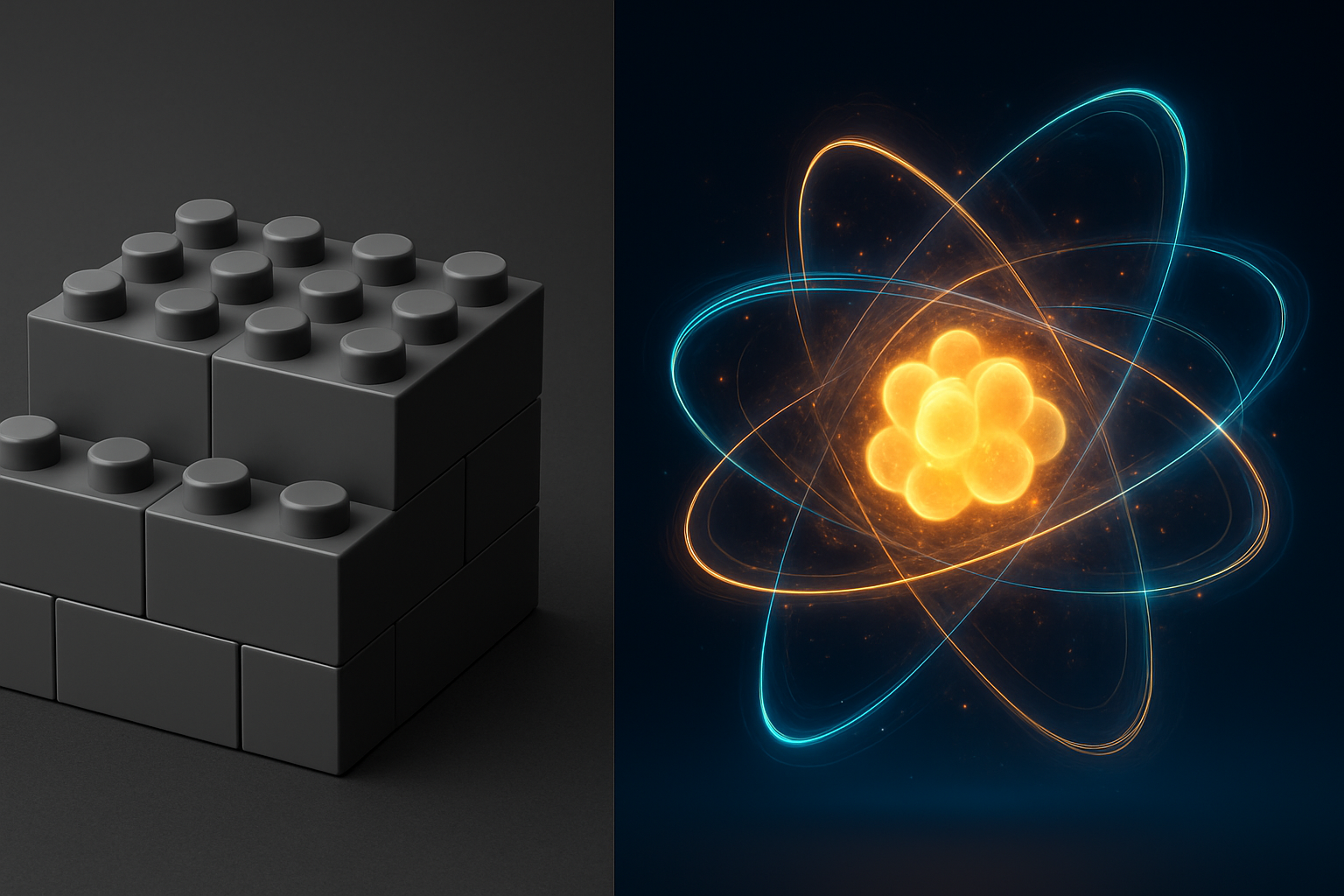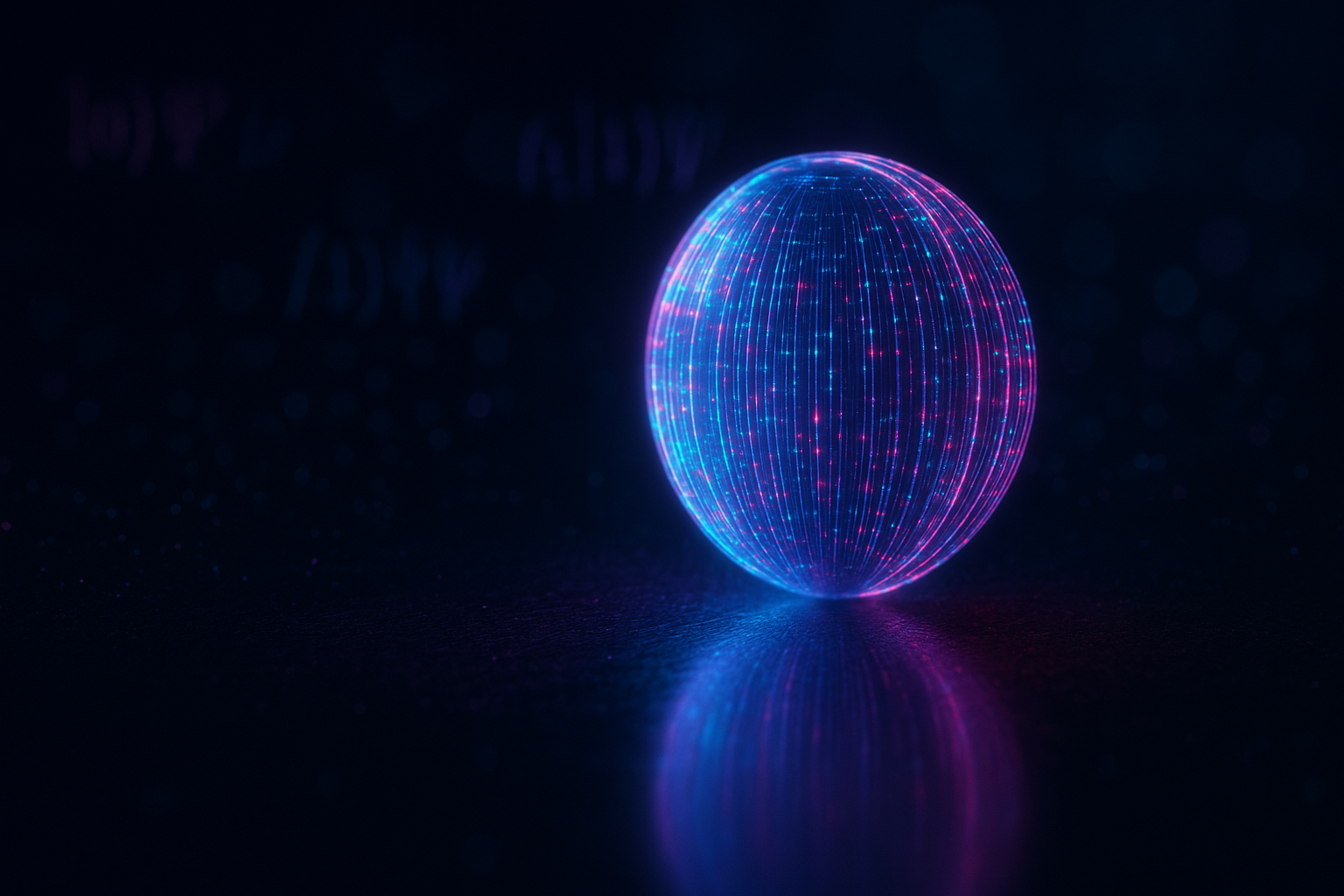When I first started trying to grasp the physics behind quantum computing, I felt like I was staring into a black hole. Everything I thought I knew about computers—the reliable 1s and 0s, the satisfying click of a switch—was suddenly irrelevant. It felt impossibly abstract.
If you’re a student approaching this subject for the first time, take a deep breath. You don’t need a PhD in theoretical physics to understand the core concept. What is quantum computing, really? It’s not about making a faster version of your laptop; it’s about making a computer that can use the actual rules of the universe—the bizarre, messy, and hyper-efficient rules of quantum mechanics—to solve problems that classical computers simply cannot touch in a million years.
Think of it this way: Classical computing is like building a perfect Lego castle. Quantum computing is like engineering the atoms that make up the Legos. It’s a different game entirely.
The Quantum Coin Flip: Superposition and the Qubit
The foundational concept is the quantum bit, or qubit.
In your laptop, information is stored in bits. A bit is a switch that is either ON (1) or OFF (0). It’s binary, rigid, and definite.
A qubit is different. Thanks to a principle called superposition, a qubit can be 1, 0, or both at the same time.
Imagine a coin flip. A classical bit is the coin after it has landed: Heads (1) or Tails (0). A qubit is the coin while it’s spinning in the air. It holds the potential of both states simultaneously. It only “chooses” one state (collapses into a definite 1 or 0) when you measure it.
This ability to exist in multiple states means that if you have just 50 qubits, they can collectively store more information than the number of atoms on Earth. That is the raw computational power waiting to be unlocked.
The Rookie Mistake: Speed vs. Modeling
One common mistake I see students make is thinking that quantum computing is just a speed boost—that a quantum computer will open your Netflix app faster. That’s not the goal.
The true value of a quantum computer isn’t faster addition or quicker webpage loading. Its power lies in simulating and modeling nature itself. The universe is fundamentally quantum. To understand how a molecule folds, how a catalyst works, or how a new material conducts electricity, a classical computer has to simplify and approximate the quantum mechanics. A quantum computer, by contrast, can model these systems natively, without approximation.
Mini Case Study 1: Drug Discovery
I once worked with a team exploring how pharmaceutical companies might use quantum optimization. They needed to find the lowest energy state of a complex protein molecule. Finding this state is crucial because it dictates the drug’s effectiveness. On a classical supercomputer, calculating the interactions of just 50 atoms takes an astronomical amount of time, making the problem intractable. A future fault-tolerant quantum computer, however, could potentially model that interaction almost instantaneously, drastically accelerating the discovery process. It’s not about speed; it’s about solvability.
| Do This Next: Visualization |
|---|
| Look up the Bloch Sphere. This visualization tool helps explain why a qubit isn’t just a 50/50 mix of 0 and 1. It shows that a qubit’s state is a vector pointing anywhere on the surface of a sphere, representing infinite potential states, not just two points. |
The Bizarre Duo: Entanglement and Interference
If superposition is the engine, entanglement and interference are the fuel and the steering wheel. These are the principles that turn potential power into usable computation.
Entanglement: A Shared Reality
Entanglement is often called “spooky action at a distance.” It means that two or more qubits become linked in such a way that they share the same fate, no matter how far apart they are. If you measure one entangled qubit and find it is a 1, you instantly know the state of the other entangled qubit is a 0 (or vice versa), even if it’s on the other side of the galaxy.
Personal Aside: The Non-Teleportation Myth I once had a very bright student who thought entanglement meant you could send information faster than light. That’s a classic misunderstanding! While the correlation between the qubits is instantaneous, you still have to send a classical signal (limited by the speed of light) to tell the person on the other side what basis to measure their qubit in. Entanglement gives you a shared secret or a perfect correlation, not a faster internet connection.
Interference: The Computational Steering Wheel
Interference is what makes a quantum computer programmable. In physics, interference happens when two waves meet, resulting in either a larger wave (constructive interference) or cancellation (destructive interference).
In quantum computing, algorithms manipulate the probability of all those simultaneous states (the superposition). The computer is steered to encourage the “paths” that lead to the correct answer (constructive interference) and cancel out the “paths” that lead to wrong answers (destructive interference).
This is the brilliant part: you’re not calculating one result; you’re calculating all possible results at once, then amplifying the right one so that when you measure the qubits, the correct answer has the highest probability of appearing.
Actionable Steps: Grasping the Logic
- Define the Goal: What is the desired answer? (e.g., “The prime factors of 15.”)
- Initialize Superposition: Put all qubits in a state of 0 and 1 simultaneously. The computer holds every possible solution (from 0 to 15, in this case).
- Apply Quantum Gates: These are the quantum versions of logic gates (like AND, OR, NOT). They are applied as mathematical operations to the qubits, causing the state probabilities to shift and interfere.
- Amplify: The gates are specifically chosen to increase the probability amplitude of the correct answer and decrease the amplitude of the wrong answers.
- Measure: You measure the final qubit states. Due to the interference, the correct answer is the one that appears with the overwhelming probability.
Checklist for Understanding Principles:
- Qubit: Multiple possibilities (Superposition).
- Entanglement: Interlinked fates.
- Interference: Amplifies the right answer, cancels the wrong ones.
The Quantum Hype Machine: What Algorithms Actually Matter
A frequent point of confusion is what problems quantum computers are actually good at. What nobody tells you is that quantum computers are only exponentially better at a handful of very specific tasks. For the vast majority of problems, your $500 used laptop is still superior.
Quantum computers excel at four main categories:
- Simulation: Modeling complex quantum systems (materials science, chemistry).
- Optimization: Finding the best solution from a huge set of possibilities (logistics, finance).
- Search: Searching unstructured databases faster (Grover’s algorithm).
- Factoring: Breaking large numbers into their prime factors (Shor’s algorithm).
The Big One: Shor’s Algorithm
Shor’s algorithm is famous because it spells the end of RSA encryption—the method used to secure almost all online transactions today. It shows that a sufficiently powerful quantum computer could break current public-key cryptography. This is a terrifying, high-stakes example of quantum supremacy.
Actionable Steps: Starting with Quantum Algorithms
If you want to start learning the concepts, don’t jump straight into Shor’s. It’s mathematically intense. Instead, start here:
- Read about Grover’s Algorithm: This is much easier to conceptualize. It shows how a quantum computer can search an unsorted list of $N$ items in about $\sqrt{N}$ steps, compared to $N$ steps classically. It’s a quadratic speedup, which is impressive.
- Find a Q-Simulator: Use an online quantum simulator, like the IBM Quantum Experience, to run basic circuits. You don’t need a real quantum computer, just the simulator, to see how the gates affect the probability of the final result.
The Common Mistake: Ignoring the NISQ Era
The biggest mistake students and investors make right now is mistaking potential for reality. The quantum computers we have today are in the NISQ era: Noisy Intermediate-Scale Quantum.
These machines have less than 100 useful qubits, and more importantly, they are incredibly noisy. The qubits are highly susceptible to errors from environmental factors (heat, vibration, stray electromagnetic fields). We don’t have the reliable, error-corrected quantum computers needed to run Shor’s algorithm yet. We are in the building phase, not the revolution phase.
Surprising Insight: The greatest demand right now isn’t for quantum programmers, but for quantum hardware engineers and error correction theorists. Building the stable machine is currently harder than writing the code for it.
The Cold Reality: Building a Quantum Computer
So, how do you keep a computer in a state of ‘spinning coin’ superposition long enough to actually calculate something? The answer is extreme engineering.
To isolate qubits from environmental noise, they must be kept ridiculously cold—colder than deep space.
Mini Case Study 2: The Cryostat
I toured a quantum lab where a cryogenic dilution refrigerator (a cryostat) housed the quantum chip. It looked less like a computer and more like a massive, inverted wedding cake made of gold-plated cylinders. The chip inside was cooled to just a few thousandths of a degree above absolute zero (about -273.14°C). The smallest external noise, a vibration, or a spike in temperature, could instantly cause the qubits to lose their quantum properties and revert to classical bits, ruining the computation.
Actionable Steps: Understanding the Hardware
There are a few leading hardware approaches that students should be aware of:
- Superconducting Qubits (IBM, Google): These use tiny circuits that operate without resistance at near-absolute zero temperatures. They are highly scalable but require the massive, complex cryostats mentioned above.
- Trapped Ion Qubits (IonQ, Honeywell): These use individual atoms (ions) that are suspended in a vacuum using lasers and electromagnetic fields. They are considered exceptionally stable and have high-fidelity operations, but they are hard to scale up.
- Photonic Qubits (Xanadu): These use pulses of light. They work at room temperature and communicate very easily, but they are difficult to entangle and measure reliably.
The Common Mistake: Thinking Qubits are All the Same
Students often read about “100-qubit machines” and assume they are all equal. They are not. A 10-qubit trapped ion machine might be much more powerful and less noisy than a 50-qubit superconducting machine, because the quality of the qubit (its coherence time and error rate) matters far more than the sheer quantity.
Ultimately, understanding what is quantum computing means recognizing that it’s not just a future promise—it’s a field being built right now by engineers, physicists, and programmers. It requires mastering concepts that feel fundamentally counterintuitive, but the reward is unlocking a level of computational power that changes the way we solve humanity’s toughest problems, from climate modeling to materials design. Get comfortable with the weirdness; that’s where the breakthroughs are hiding.
Author Box
Editor — Diviseema Polytechnic Editorial Team Curated by senior faculty and industry alumni. We verify every guide against current industry standards to ensure accuracy and relevance for students.
Disclaimer: Content is for educational purposes and not personalized financial or career advice.






